The Ministry of Defence has confirmed continued progress on the Future Combat Air System (FCAS), with over £2 billion invested to date and formal programme structures now in place to deliver the next-generation fighter aircraft under the trilateral Global Combat Air Programme (GCAP) with Japan and Italy.
In a written response to James Cartlidge MP, Defence Minister Maria Eagle noted that the UK “has invested over £2 billion already in FCAS/GCAP and the associated Team Tempest research and development programme.” She also confirmed that the Future Combat Air System’s Outline Business Case 1 (OBC1) was submitted in March 2021, following the Strategic Outline Case in December 2018.
The FCAS initiative encompasses a broader ‘system of systems’ to ensure future air superiority, while GCAP is delivering the central crewed platform — a sixth-generation combat aircraft intended to replace the Eurofighter Typhoon in the mid-2030s.
Significant milestones in the programme’s governance have been reached in recent months. A new trilateral body, the GCAP International Government Organisation (GIGO), has been established to coordinate timelines and strategic goals across the UK, Japan, and Italy.
Meanwhile, industry partners BAE Systems, Leonardo, and Japan Aircraft Industrial Enhancement Co Ltd (JAIEC) have agreed to form a new joint venture company to oversee development of the aircraft. Both the GIGO and the new industrial headquarters will be based in Reading, placing the UK at the heart of programme delivery.
“Progress continues to be made on the Future Combat Air System (FCAS). The core platform, that will sit at its heart, is being delivered through the Global Combat Air Programme (GCAP),” said Eagle.
The sixth-generation fighter will incorporate advanced stealth technologies, cutting-edge sensors, and the ability to team with autonomous systems. Alongside the aircraft, the broader FCAS framework will integrate weapons, AI, cloud-based command systems, and supporting assets to create a networked combat capability.


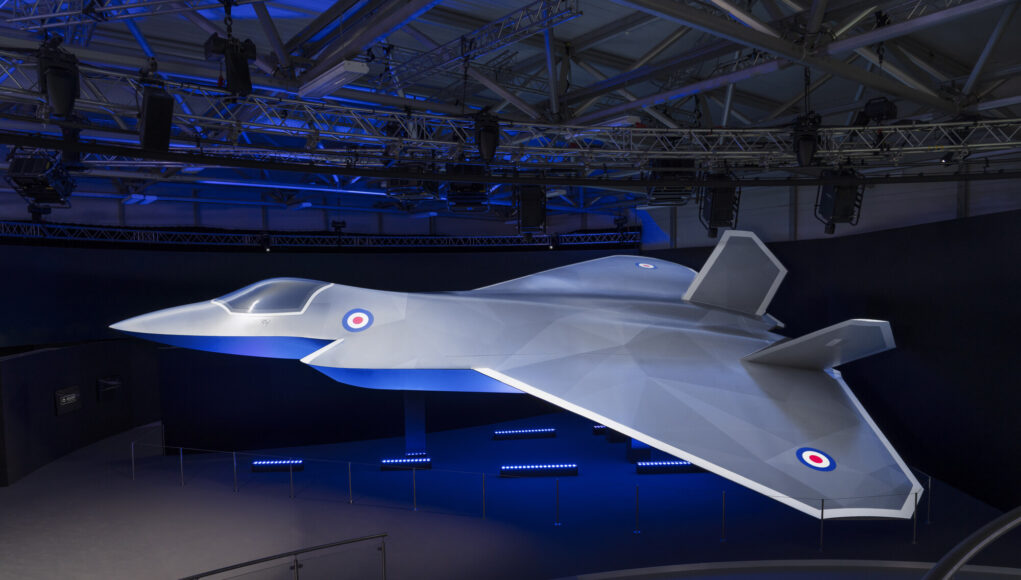


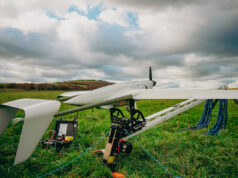
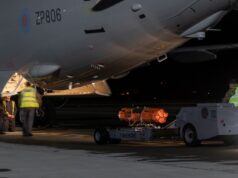
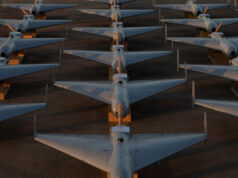
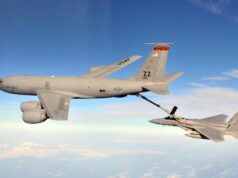
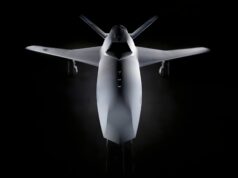

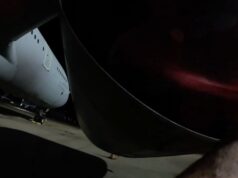
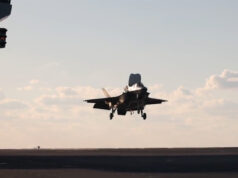

Exciting times – recently the RAF suggested the requirements included weapon bays with twice the capacity of the F-35A, and enough internal fuel to cross the Atlantic. So, if Argentina gets unruly, Black Buck II is officially on the cards 🙂
Vertical stabilisers are interesting, given that the Chinese have dropped them, and the Americans seem to be going the same way on their advanced new air superiority fighters. That being said, the design isn’t finalised, so the GCAP fighter might lose them as well. If not, I assume that all-aspect stealth isn’t as necessary as some are suggesting for a competitive air superiority fighter into the 2030s.
I think the decision to omit the vertical stabiliser will be as much about high speed as manuverability. Very difficult to have super sonic flight in a tailless design.
I also think the USAF probably looked at what LM was pitching and thought it was unaffordable.
They did the same with the CCA Level 1 which is why Anduril and General Atomics were selected. LM pitched a Uber expensive design and the USAF wanted cheap.
The USAF is short on funds and it wanted NGAD, Sentinel and B21.
Something had to give.
I question Stealth as being a permanent requirement as the more wide spread the technique is the more likely technology will be able to detect them.
There’s more chance of england winning the next world cup than stealth design disappearing any time soon, probably not in our lifetime. There is no way we will see aircraft design roll back so tech the best part of a century old and dirt cheap which anyone can get hold of can detect the latest warplanes. If something totally new comes along it’s going to be expensive and of limited availability, potentially with high power demands not suited to small vehicles, radar will still have a place for the foreseeable future.
Low/Very Low Observable, or what was referred to as Stealth, won’t go away, it’s become the baseline. The next generation jets like Tempest and F-47 will focus on reducing RCS further across multiple radar bands, but also will try to reduce heat signature in response to the development of IRST.
Stealth includes the reduction of the following radio, radar, audible noise, visual, infrared and ultraviolet signatures. The aircraft designer will look at reducing these signatures. But mainly focus on radar, as radar is the greatest threat, due to increased detection range in all weathers.
So long as we will be using radar and IR sensors to initially detect aircraft, stealth in its current form will remain an intrinsic part of a modern/future aircraft’s design requirements. With radar, it is a known quantity, its physics are well understood. Which also means the way it is countered is also well understood, for example a blended body shape and the removal of 90 degree reflectors. As technology progresses a radar’s transmitter can be made more powerful or operate on a broader range of frequencies and its receiver made more sensitive, which when tied with improved signal processing, increases its detection range against both stealthy and non-stealthy targets. Conversely as technology advances, materials that can be used to absorb or attenuate a radio wave gets better, which relevels the playing field. Radar stealth in particular is not about making your jet (asset) invisible, it is about delaying when it becomes visible. As all passive radar absorbent materials (RAM) have a threshold level. Which is the point they can no longer absorb the radio wave, but begin to retransmit it. The secret is at what point does the retransmission become big enough for the radar’s receiver to detect the signal, that can be used for tracking.
Stealth is here to stay. It’ll get less effective as time goes on, but any new technologies that can detect low observable aircraft will by their very nature be able to detect traditional aircraft at a greater range.
Potentially contemplate the designation fighter-bomber? GCAP is going to be a beast in flight. 🤔
The vertical stabilisers are very F-23 like aren’t they and that aircraft was more stealthy than the F-22 and as they are presently shown, unlike the F-23, they are above the wing which might effect matters. Seems a lot of debate about canards being unstealthy, US sources lampooned the J-20 and the Chinese are laughing back as Boeing’s offering as shown presently (despite the attempt at disguise) seems to sport them. It’s been said the canards help rebalance the loss of control the lack of vertical stabilisers inflict so what’s the plus/minus quotient I wonder. All a bit speculative even amongst aerodynamicists from what I read. Some say the overall body design/shape has a greater overall effect on stealth than canards, how canards compare to cranked stabilisers is an interesting one. As someone said and I have seen various speculative visuals regarding the cranked vertical stabilisers flattening, one presumes for cruise mode, though don’t think that’s going to work with a delta configuration and no idea if the idea has been considered for real on any design.
I’m surprised how [relatively] smooth this project is going given the sums involved. It seems that everyone (even the Treasury) have realised that FCAS/GCAP is the last game in town if the UK is to retain a place at the top table in terms of sovereign military combat aircraft industrial capability. Without Tempest – Sweden, Türkiye, India and South Korea are just some of the countries that will leave us in their dust.
Do not jinx it
No hardware yet. Then problems will appear.
It’s the cost of buying American and having no control why it’s running smoothly the cost of the f35 is insane
I wonder what the cup holders look like on a 6th gen jet?
They must be super fancy.
Unfortunately they will require a specific cup that is only produced by BAE, at a cost of £20,000 per unit
The design approaches of the individual teams is certainly interesting. At the moment Tempest seems to be going with small vertical tails but no canards. Which is contrary to what we know( think) about the US and Chinese efforts. Up until recently , the general opinion of the arm chair experts( me included) , that canards b*gg**ed up stealth and I know the Typhoon has a setting which the canards can be set to minimise forward RCS.
Any design is a balance of compromises, one assumes the Tempest team don’t think omitting the tails is worth the trade off somewhere else.
I also wouldn’t be surprised if the tails can be rotated flat during some modes of flight or the GCAP team are having some fun throwing out red herrings to their competitors.
Trump has all but sunk oversea sales of the F46 , FCAS seems to be mired in politics . Potentially leaving the 6 th gen market wide open to GCAP although Lockheed’s ideas for a 5th gen plus F35 could put a big spanner in the works, assuming the can get past the kill switch debacle.
For stealth, canards have a number of downsides. The first is the shape, where the short leading/training edges and tip can cause resonance as it matches the requirements for some radar frequencies. This is caused by the straight edge acting as an antenna, so the longer the straight edge the better. As the frequency to cause the resonance affect will need to be lower. Thereby making it nearly impossible to get a decent tracking solution for a missile shot. The second issue is that when the canard moves, a flat surface appears on the fuselage, which makes a very good radar reflector. The third issue is on the construction of the canard. Some are made of carbon fibre composite, where some radar frequencies can see straight through this, and the metal actuator is seen by the radar.
A lot of these issues can be mitigated by using radar absorbent material at the fuselage joint and the canard’s construction, which attenuates the radar transmission. I’m pretty sure Boeing will have looked into this.
I do believe what has been shown publicly of Tempest so far is a red herring, but will have a some truth in the design. As in the overall larger size and general shape. I am also certain the aircraft will be more F111 sized than F22. Due to the requirements of the long unrefuelled range and the ask of having double the F35’s internal payload. A delta wing will help meet these requirements, due to the greater internal volume that you can use to store fuel. The wing can be better blended into the fuselage, to give a lifting body fuselage, which also helps give a broader radar stealth. The delta wing has transonic/supersonic cruise benefits over a trapezoid design. The delta wing will have a lower frequency radar resonance affect, though the wing tip will need careful consideration.
How aerobatic the aircraft is, remains a significant question? As with today’s highly agile and high off-boresight missiles, does the aircraft really need to be highly agile? Which is the same response given for the F35s aerobatic abilities. However, agility does have a very good use defensively. Which when used with active and passive countermeasures, gives the aircraft a much better chance of surviving against a missile attack. If agility is still required, perhaps we will see something similar to the Russian Su-57 leading edge vortex controllers (LEVCONs). Which give similar aerodynamic benefits as canards, but are more blended into the wing, to maintain a lower radar cross section.
Tailfins are a big question. Do you have them for or remove them? Both have advantages and drawbacks. Tail fins give you Yaw authority, which are their biggest advantage, without them the aircraft will inherently “Dutch Roll”, which is where it will oscillate around the fore and aft axis. But it will also skid in turns and loose height, especially highly banked turns. A lot of these problems can be mitigated by a fly-by-wire system linked up to a digital flight control computer fed by gyro data. However, to have any yaw authority, you will need some form of deployable main wing airbrake, such as split flaperons/elevons and for multi-engined aircraft, differential thrust control, as per the B2. This does mean that the aircraft’s yaw controls will be constantly moving, which is not great for minimizing you radar cross section. The yaw authority generated by a flaperon, will be governed by the moveable surface area and how far away from the aircraft’s fulcrum they are. They can generate a lot more drag than a conventual fin/rudder combination, thereby allowing them to also be used as airbrakes. It will be interesting to see what the Chinese J50 with its moveable wing tips, does in this regard. Whereas the larger triple engine J36 uses split flaperons. As they have decided that not having a fin or fins, gives the aircraft better all round radar stealth at the expense of agility and responsiveness.
Thank you for the in-depth explanation of canards and find on stealth . Most of which I knew or had already surmised but interesting reading none the less.
Interesting you think the publicity models/ pics of tempest are one big red herring. I tend to think we are very early days and the design may evolve substantially rather than deliberate attempts at mis direction,
There’s no kill switch debacle for the F-35. That’s just made up nonsense.
As for the F-47, my guess is Congress will prevent the sale to foreign countries just as they did with the F-22.
Whether you agree or disagree with my point is up to you but for your claimed “ nonsense” it has been covered by enough news outlets both main stream and military to at least give credence to my point and it will remain a factor in F35 sales until LM prove by whatever means it is untrue.
As for the F47 the huge cost of delivering the aircraft , plus current and future budgetary pressure on the USAf will cause them to offer some form of export version to spread the development cost.
As the UKDJ reported in March, “In response to a parliamentary question from Liberal Democrat MP David Chadwick, Defence Minister Luke Pollard stated that “the UK maintains the freedom of action to operate the F-35 Lightning at a time and place of our choosing.””
I know TDS is spreading again, but please don’t let it get the better of you.
As for the F-47, if it is as advanced as the F-22 was when it was introduced, it won’t be sold to other nations.
I am neither annoyed or upset, but I will give my full explanation as it seems to have escaped you.
1) Do I think the F35 has a kill switch , NO
2) if it did, do you honestly think LM would admit it?
3) The U.K. is in the privileged position of being able to reverse engineer ANYTHING on the aircraft, software included. So if there was a kill switch we would have found it. I also would not be surprised if they are not already quietly reverse engineering parts of the plane already.
4) As several respected aviation journalist have reported,( Gas (millenium 7) , Hollings (sand box news) to name two) there are plenty of ways to ground the jets including withholding mission critical data files or more obviously spares.
5) There has been considerable news coverage regarding if the F35 and other advanced US sourced military tech has some form of disabling tech to prevent it being used should Trump or some equally untrusty POS squatting in the White House in future should deem it These rumours will continue to persist. It is a simple consequence of the behaviour of the current incumbent of the White House and his behaviour.
6)You are entitled to your opinion but drop the condescending tone.
As for the F47 how advanced remains to be seen but there will undoubtably be a market for these ultra advanced jets and when it sees the light of day is also up for debate. The development cost alone will push the US into marketing it or carry the burden of the tens of billions ( F35 development) cost themselves, this is what drove the US to heavily curtail the number of F22 and ultimately them seeking partners to develop the F35 and why you get a lot of bang for your buck with the F35. With hundreds of jets already built the astronomic cost of developing it is now a small fraction of the sticker label and continuing to fall ( mostly) tech refresh 4 may reverse it.
It is tv Simple maths .
But hey of Congress want to go down that route, it is fine by me. Given the team behind Tempest , it will be a match for anything that comes out of Boeing or China.
Assuming the politicians continue to stay out of it.
I’m with you Michael people or news outlets like to work in the Black and White, so when they talk about the F-35 ‘kill switch’ becomes the focus but it’s a simplistic approach to whatever the reality likely is. As you say a kill switch would likely be difficult to disguise (Bae is a leading aviation coder in its own right both sides of the Atlantic) but full and effective use of F-35s without US approval would likely decay over the years if a dodgy US President (you know the sort who thinks by not doing trade saves the Country money) decided to impose limitations. I suspect our nuclear Ballistic submarines may well effectively be in a not dissimilar situation where control is there but targeting support et al will seriously effect its effectiveness, that however equally allows deniability, but let’s hope in either platform it’s not the case.
You can’t prove something doesn’t exist, be it a F35 kill-switch or god.
The onus is on those who belief something exists to prove they are right.
Has the fix come in for the comments?
No bots any more, and I have a tickbox to “Notify me via email if anyone answers my comment”.
Hurrah!
But do we get more than 4 nested comments?
Haven’t had a conversation long enough yet, we’ll find out soon enough!
Tempest needs at least the combat radius & payload of the F-15EX. The ability to carry 5000lb class weapons.
While details are scarce true if it is indeed able to transit the Atlantic un-refuelled then that would be around a third longer range. Even if that’s optimistic or overblown the use of adaptive engines and advancements you simply cannot incorporate into even an advanced F-15 update and knowing a little of Japan’s requirements, I would feel safe in saying it will more than match an F-15EX in both regards. Internal storage will be interesting mind.
I would say, even using the publicity image/model of Tempest. It would have considerable more unrefuelled range than the F15EX. This is based on the much cleaner aerodynamic design, along with the use of a large delta wing. The delta wing is key here, as it allows much more fuel to be carried. Whilst also being more efficient for cruising at higher transonic/supersonic speeds. So will in essence either burn less fuel going the distance, or burn the same amount of fuel to get there quicker.
As they say, what looks right is right. Strange but true. Often.
The technologies being developed for the GCAP are surely exciting